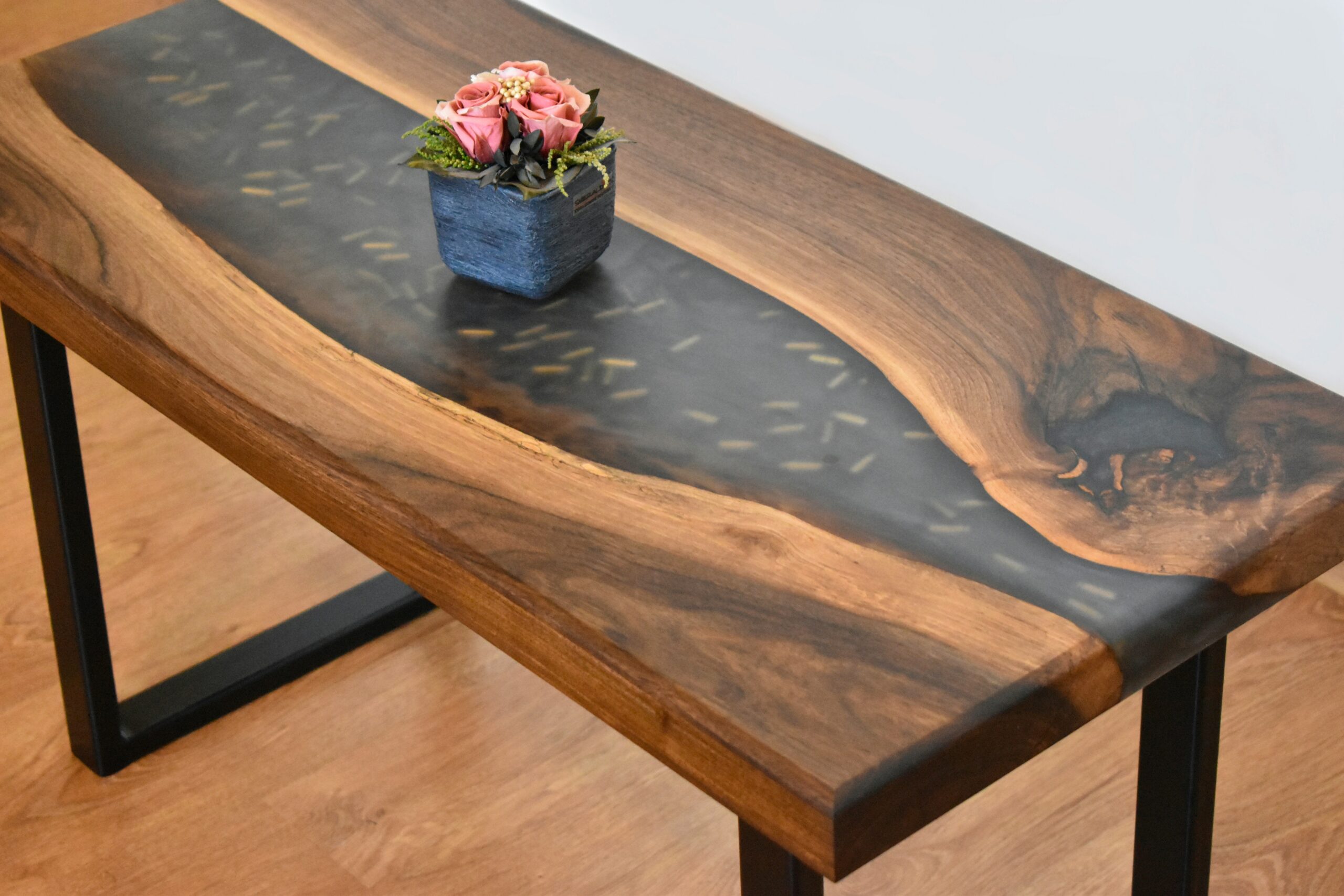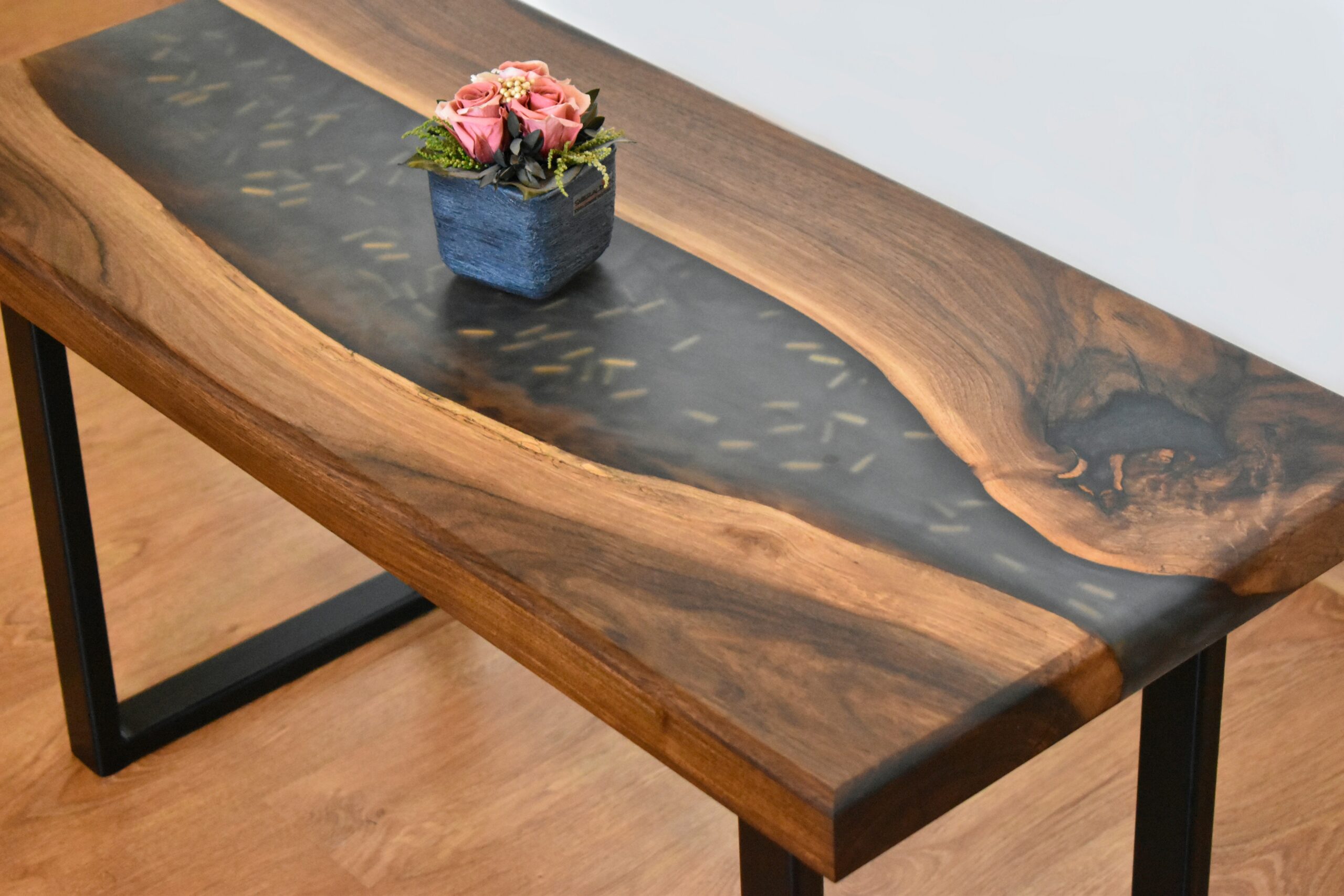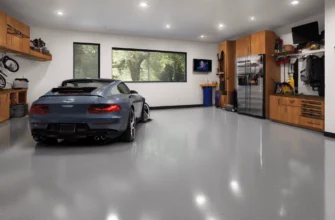- Introduction to Epoxy Flooring
- Durability of Epoxy Coatings
- Aesthetics and Design Flexibility
- Safety Features of Epoxy Flooring
- Maintenance and Longevity
- Installation Process of Epoxy Flooring
- Environmental Impact and Sustainability
- Comparing Epoxy to Other Outdoor Flooring Options
- Conclusion: Making the Right Choice for Your Outdoor Space
Introduction to Epoxy Flooring
Epoxy flooring is a modern choice for enhancing various surfaces, particularly in outdoor areas such as pool decks. Comprising a mixture of resin and hardener, epoxy flooring forms a durable and resilient surface when these components are combined and cured. The resulting material is not only aesthetically pleasing but also provides significant functionality, making it an ideal option for various applications.
One of the key benefits of epoxy flooring lies in its strength and longevity. Once cured, the surface exhibits impressive resistance to wear and tear, effectively standing up to the demanding conditions often associated with outdoor spaces. This durability proves especially valuable for pool decks, where exposure to water, chemicals, and foot traffic is prevalent. Furthermore, epoxy flooring can withstand extreme temperatures, helping to maintain its integrity and appearance over time.
In addition to its robust nature, epoxy flooring is known for its seamless application and ease of maintenance. The smooth surface minimizes the accumulation of dirt and debris, making cleaning straightforward. This is particularly advantageous for pool areas, where cleanliness and safety are paramount. The slip-resistant properties of certain epoxy formulations further enhance safety, providing traction underfoot even when wet.
Moreover, the versatility of epoxy flooring allows for a variety of styles and finishes, enabling property owners to customize their spaces to match their aesthetic preferences. From vibrant colors and textures to decorative patterns, the options are extensive, allowing for both practical and visual enhancement of outdoor areas.
Overall, epoxy flooring serves as a functional and attractive solution for outdoor applications, specifically suited for pool decks, making it a popular choice among homeowners and designers alike.
Durability of Epoxy Coatings
Epoxy coatings offer exceptional durability, particularly in outdoor environments where they are subjected to a variety of stressors. One of the standout features of epoxy is its resistance to extreme weather conditions. This type of flooring is designed to withstand fluctuating temperatures, heavy rain, and even snow, making it suitable for diverse climates. Furthermore, epoxy does not crack or degrade when exposed to moisture, allowing it to maintain its integrity over time.
In addition to weather resistance, epoxy flooring excels in handling UV exposure. Traditional outdoor flooring materials often fade or deteriorate under the sun’s harmful rays. However, epoxy coatings are formulated with UV-resistant properties that help preserve their color and structural integrity. This quality ensures that pool decks and outdoor entertaining spaces remain attractive and functional, regardless of prolonged sunlight exposure.
Another critical aspect of epoxy flooring is its ability to endure heavy foot traffic. Whether for a family gathering poolside or a lively outdoor event, epoxy can withstand the impact of numerous visitors without showing signs of wear. The hard, non-porous surface created by epoxy coatings is designed to resist not only physical abrasions but also stains from spills and other outdoor elements. This makes it easier for homeowners to maintain a clean and visually appealing outdoor environment.
With all these attributes combined, epoxy coatings prove to be an ideal investment for pool decks and outdoor spaces. Their durability fosters a long-lasting solution that not only enhances the aesthetic appeal of the area but also provides safety and comfort. Therefore, selecting epoxy flooring is a strategic choice for homeowners looking to fortify their outdoor setups against the inevitable wear and tear caused by nature and daily activities.
Aesthetics and Design Flexibility
Epoxy flooring offers a remarkable avenue for enhancing the aesthetic appeal of pool decks and various outdoor spaces. One of the primary advantages is the extensive range of colors, patterns, and finishes available, which allows homeowners to customize their areas creatively. Whether someone desires a sleek, modern finish or a more traditional appearance, epoxy presents versatile options that can cater to different tastes and architectural styles.
Homeowners can choose from a myriad of color schemes. From vibrant hues that evoke a lively atmosphere to muted tones that provide a serene ambiance, the choices are endless. This extensive palette not only enhances visual appeal but also helps in creating a cohesive look with the surrounding landscape and architecture. Moreover, certain epoxy formulations can incorporate decorative flakes or metallic elements, adding a unique texture and depth to the surface.
In addition to color choices, the design flexibility of epoxy flooring is a significant advantage. It can be applied in patterns that mimic natural stone, tile, or even intricate geometric designs. This ability to customize design allows homeowners to think outside the box, transforming ordinary spaces into extraordinary retreats. For instance, a swirl pattern can give a dynamic feel to the area around a pool, while a brushed finish may evoke a more understated elegance.
Furthermore, the durability of epoxy complements its aesthetic benefits. Unlike traditional flooring materials, epoxy withstands the elements without fading, cracking, or peeling. This resilience ensures that the beauty of the floor is maintained over time, significantly enhancing curb appeal. By selecting epoxy flooring for pool decks and outdoor areas, homeowners not only improve the overall design of their spaces but also invest in a long-lasting solution that upholds its charm even in challenging outdoor conditions.
Safety Features of Epoxy Flooring
Epoxy flooring presents several safety advantages that make it an ideal choice for outdoor environments, particularly around pool decks. One of the most significant benefits is its potential for enhanced slip resistance. By incorporating specialized additives or textured treatments into the epoxy mix, the surface can significantly reduce the risk of slips and falls, which is especially crucial in wet areas. This feature is paramount for homeowners and pool managers who seek to create a secure environment for family and guests.
Moreover, epoxy flooring can maintain a cooler surface temperature underfoot compared to traditional materials like concrete or tile. This is vital for outdoor spaces where bare feet are commonplace, as the sun can make surfaces uncomfortably hot. The inherent properties of epoxy allow it to reflect sunlight better, minimizing heat absorption. As a result, individuals can enjoy their time around the pool without discomfort from a scorching deck, thus enhancing the overall experience.
In addition to these features, careful selection of surface treatments can further optimize the safety aspects of epoxy flooring. For instance, anti-slip coatings can be applied to achieve a desired level of grip, tailored to specific environments. Such treatments can effectively cater to varying factors, including the frequency of foot traffic and exposure to moisture. Additionally, choosing a lighter color for the epoxy coating can facilitate cooler surfaces, while darker colors offer an aesthetically pleasing option that can blend well with the surrounding landscape.
Ultimately, the safety features of epoxy flooring, including slip resistance and ability to remain cool underfoot, contribute significantly to its suitability for outdoor settings. With thoughtful application and selection of surface treatments, epoxy flooring not only maximizes safety but also fosters an enjoyable and functional outdoor atmosphere.
Maintenance and Longevity
One of the standout features of epoxy flooring is its low-maintenance nature, especially beneficial for outdoor spaces such as pool decks. Unlike traditional flooring materials, which may require frequent cleaning and significant upkeep, epoxy surfaces can be easily maintained with minimal effort. Cleaning an epoxy floor typically involves a straightforward process: sweeping away debris and mopping with a gentle detergent solution. This ease of maintenance helps homeowners save time and effort, enabling them to enjoy their outdoor spaces without the burden of extensive upkeep.
Moreover, epoxy flooring is resistant to stains, chemical spills, and weather variations, which further contributes to its appeal. This resilience ensures that any accidental spills or exposure to harsh outdoor elements do not lead to immediate deterioration, making it a practical choice for poolside environments where moisture and chemicals are prevalent. The non-porous nature of epoxy means that it does not absorb liquids or harbor bacteria and mold, promoting not only a cleaner look but also a healthier outdoor atmosphere.
In terms of longevity, epoxy flooring applications are known for their durability. When correctly installed, an epoxy surface can last for many years—often exceeding a decade—before any significant wear becomes evident. This impressive lifespan demonstrates the cost-effectiveness of epoxy flooring when compared to other options, which may need replacement or resurfacing sooner. By investing in epoxy flooring, homeowners can minimize potential future expenses associated with repairs and replacements, contributing to an overall more financially sound decision. Therefore, the combination of low maintenance and extended longevity positions epoxy flooring as an excellent choice for enhancing outdoor spaces.
Installation Process of Epoxy Flooring
The installation of epoxy flooring involves several critical steps that ensure a smooth and durable finish. The first phase is the preparation of the surface, which is indispensable for achieving optimal adhesion. Before applying epoxy, the existing surface must be thoroughly cleaned to remove any dirt, debris, and contaminants. Grinding or shot blasting is often utilized to create a rough texture, enhancing the bond between the epoxy and the substrate. For pool decks, it is essential to assess the surface for cracks or imperfections, as these will need to be repaired prior to the application process.
Once the surface is adequately prepared, the next step is the application of the epoxy itself. This process typically occurs in multiple stages. Initially, a primer coat is applied to the surface, which facilitates better adhesion for the subsequent layers. After allowing the primer to cure, the base coat is installed, followed by the decorative elements, if desired. Common choices for decorative finishes include color flakes or metallics, tailored to enhance the aesthetics of the outdoor space. It is crucial to apply the layers within a specified timeframe to ensure proper bonding.
After the application, allowing adequate curing time is essential for longevity and durability. This period can vary based on environmental conditions, usually ranging from 24 to 72 hours; therefore, it may be prudent to avoid foot traffic on the surface until fully cured. Due to the technical nature of the process, as well as the need for specialized equipment and materials, hiring professionals for the installation of epoxy flooring is highly recommended. Qualified installers are equipped with the expertise to deliver a high-quality finish and ensure that the flooring will withstand heavy use while maintaining its appearance over time.
Environmental Impact and Sustainability
As societies become increasingly conscious of their environmental footprint, it is vital to assess the sustainability and environmental impact of various building materials, including epoxy flooring. Epoxy flooring, known for its durability and aesthetic appeal, can also offer eco-friendly options that limit environmental degradation. Many manufacturers have begun developing water-based epoxy formulations that significantly reduce volatile organic compounds (VOCs), which are harmful to both air quality and human health. By choosing these eco-friendly alternatives, consumers can help minimize adverse environmental effects associated with traditional epoxy products.
The sustainability of materials used in epoxy flooring is another critical consideration. Epoxy resins often consist of by-products from petrochemical processes; however, there is a growing trend toward using renewable resources in formulation. For instance, some manufacturers incorporate recycled content or bio-based materials, reducing reliance on virgin resources. This shift not only lessens environmental impacts during manufacturing but also promotes a circular economy where materials are reused and repurposed rather than disposed of. Therefore, selecting eco-conscious options can enhance the sustainability of outdoor spaces.
Moreover, the efficiency of epoxy flooring in energy consumption cannot be overlooked. Its reflective surface can contribute to better light distribution and visibility, thereby reducing the need for additional lighting during evening and nighttime hours. This quality is particularly beneficial in outdoor spaces such as pool decks, where proper illumination enhances safety without significantly increasing energy costs. Additionally, the long lifespan of epoxy flooring means that it requires less frequent replacement, further minimizing the resources needed over time. In this way, opting for epoxy flooring contributes positively to environmental efforts in both residential and commercial outdoor spaces.
Comparing Epoxy to Other Outdoor Flooring Options
When selecting the ideal flooring for outdoor spaces, various materials are often considered, including concrete, tile, wood, and epoxy. Each flooring type presents distinct advantages and disadvantages that merit careful consideration, particularly in outdoor environments such as pool decks.
Concrete flooring is a common choice due to its durability and cost-effectiveness. It can withstand harsh weather conditions and heavy foot traffic. However, concrete is prone to cracking and can become slippery when wet, making maintenance a crucial aspect to consider. While it can be treated with sealers to enhance longevity, the aesthetic appeal of concrete often limits creative expression.
Tile, on the other hand, provides an attractive and customizable flooring option. Available in various designs, tiles can significantly enhance the visual context of a pool deck. However, they can be susceptible to cracking under heavy impacts and may require a higher installation cost compared to epoxy. Additionally, tile surfaces can also become slippery unless specifically designed with a textured finish.
Wood offers a natural, warm look but comes with significant drawbacks. Its susceptibility to water damage, warping, and pest infestations can lead to increased maintenance costs in the long run. While wooden decking provides a comfortable surface, its durability can be limited compared to epoxy flooring solutions.
Epoxy flooring emerges as a superior choice for outdoor areas, especially pool decks. It combines the resilient properties of concrete with added benefits such as resistance to moisture, chemicals, and UV rays. Furthermore, epoxy offers a non-slip surface when textured properly, making it safer for wet environments. The extensive customization options allow homeowners to create unique, visually striking outdoor spaces that withstand the test of time.
Conclusion: Making the Right Choice for Your Outdoor Space
Choosing the appropriate flooring for outdoor areas, particularly pool decks, can significantly enhance both the functionality and aesthetic appeal of these spaces. Throughout this discussion, we have explored the numerous advantages offered by epoxy flooring, including its durability, resistance to water, and low maintenance requirements. These characteristics make epoxy a compelling choice for environments that are frequently exposed to moisture and the elements, ensuring longevity and reduced upkeep.
Moreover, the versatility of epoxy flooring allows for a wide range of design options, enabling homeowners to customize their spaces according to personal preferences and styles. From vibrant colors to unique patterns, epoxy can transform any mundane outdoor area into a visually appealing and inviting environment. This aspect is particularly valuable for those looking to create a cohesive outdoor living experience that seamlessly integrates with landscaping and architectural contours.
As we have seen, the benefits extend beyond mere aesthetics. The slip-resistant properties of epoxy flooring make it a safer option for families and guests, especially around pools where the risk of slips and falls is heightened. Additionally, its resistance to chemicals and UV rays ensures that the original appearance is preserved over time, further solidifying its position as a practical choice for outdoor use.
Given these multifaceted advantages, it is prudent for homeowners to consider epoxy flooring as a viable and attractive option for their outdoor spaces and pool decks. We encourage individuals to seek professional consultations to receive tailored information and advice based on personal needs and circumstances. This step is crucial in making a well-informed decision that maximizes both enjoyment and functionality in outdoor settings.








